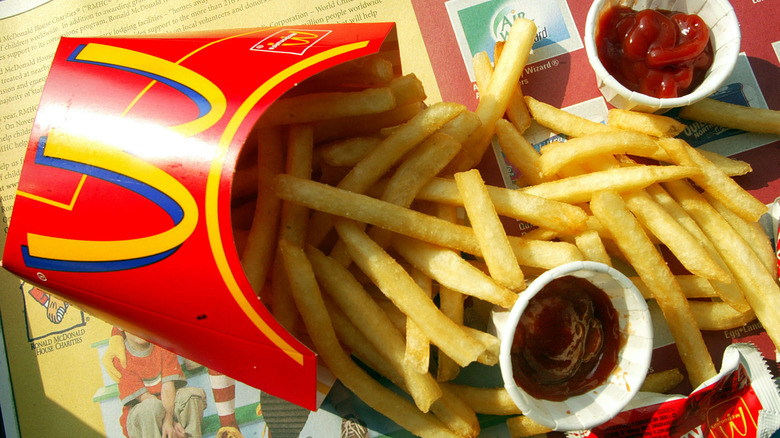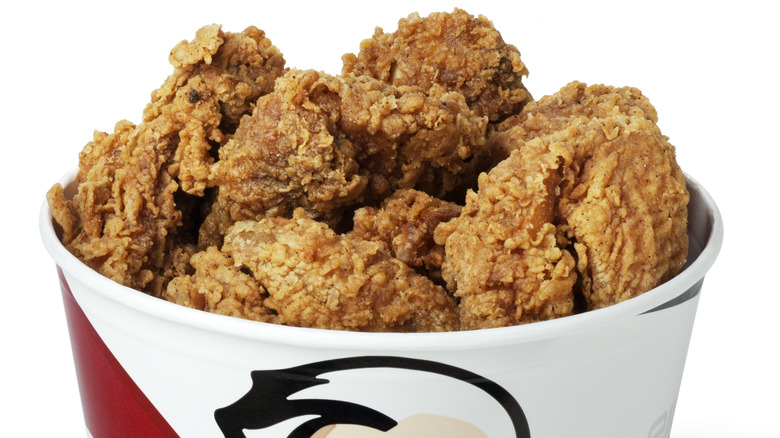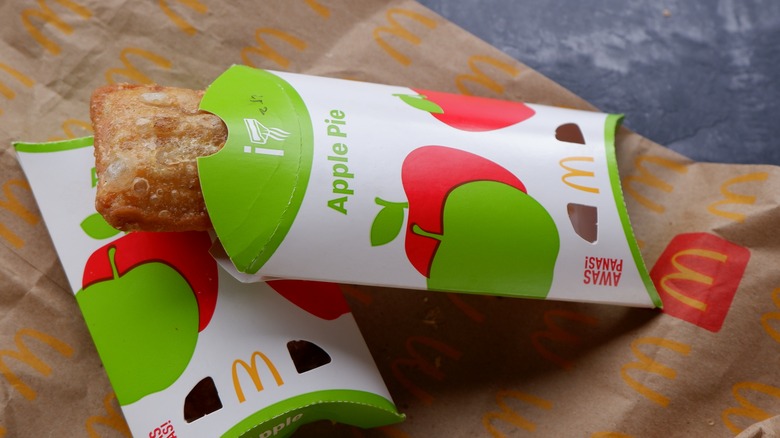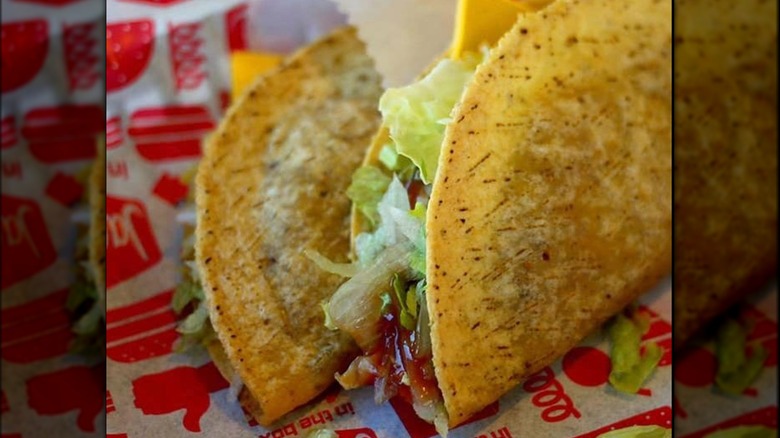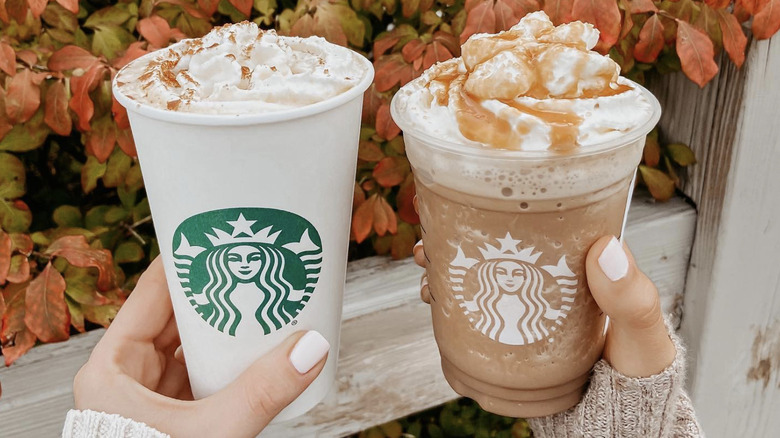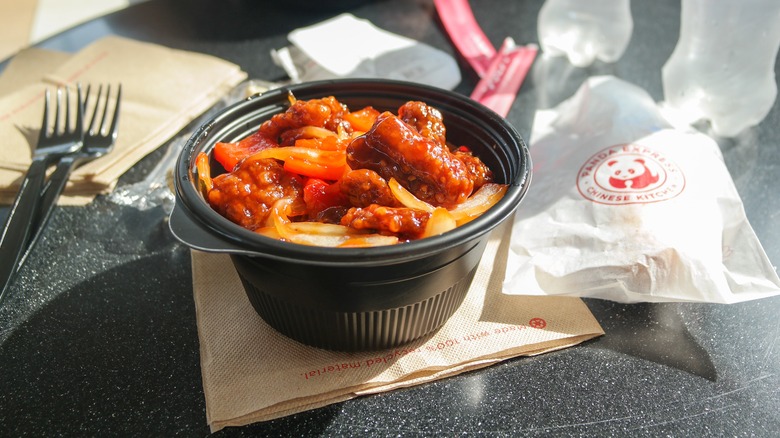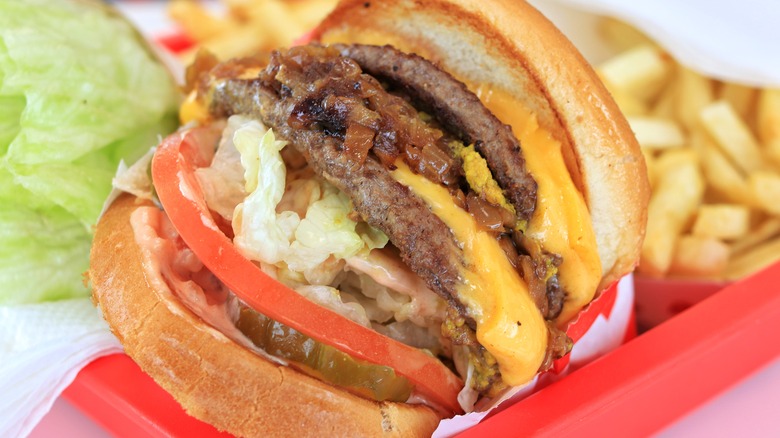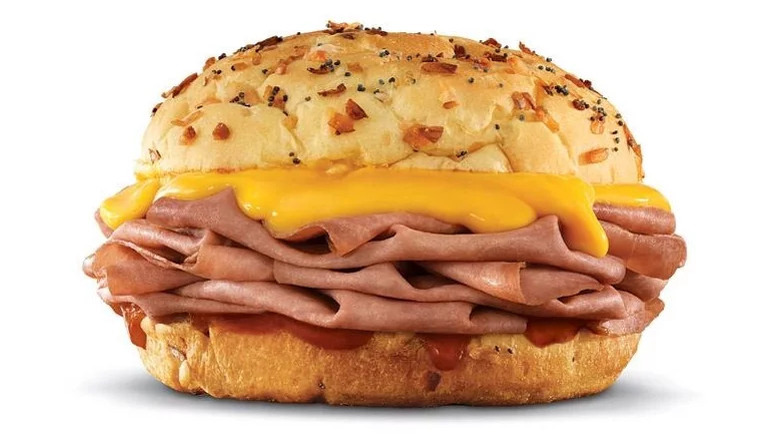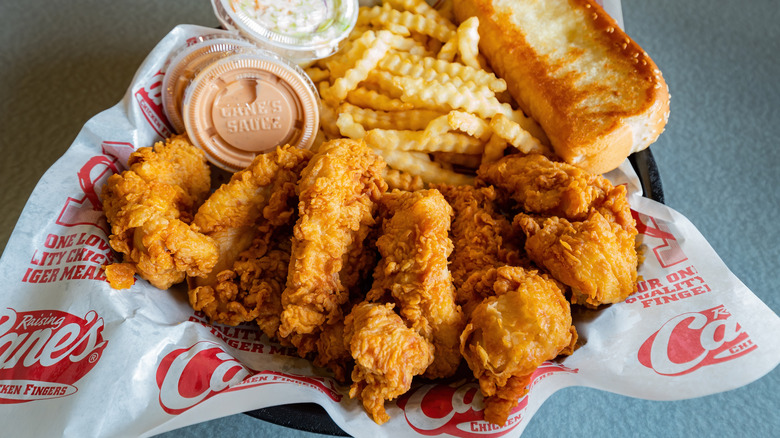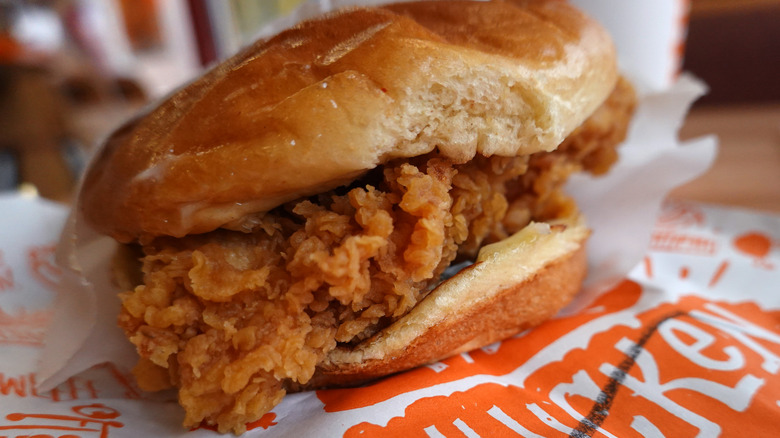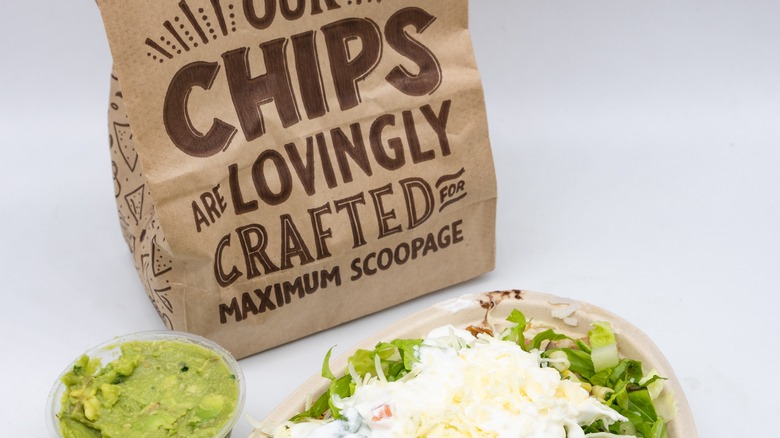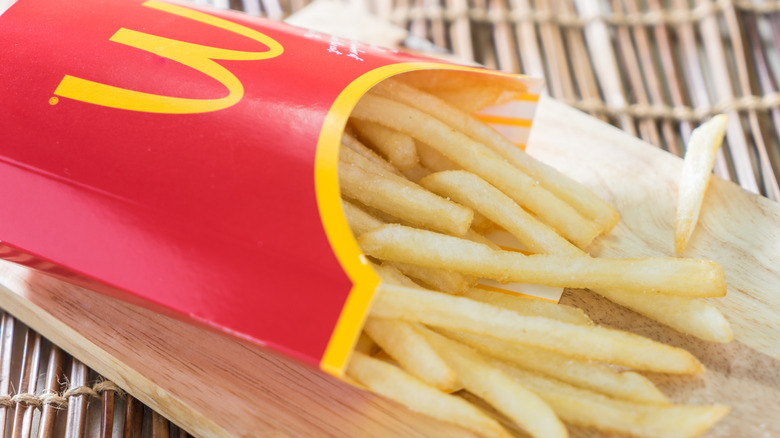What Really Makes Popular Fast Food Items So Delicious?
Fast food restaurants are undeniably attractive given the relatively low cost and convenience. Yet no matter what type of cuisine is sold, one thing is true of every fast food chain with a global presence: it serves really tasty products. In fact, the main reason why so many fast food items have developed fans in every corner of the globe is because they're delicious.
That's by design, of course. Virtually everything found on a fast food menu is the result of calculated efforts by teams of chefs and food scientists in corporate kitchens, ensuring the products are utterly delectable. This process requires the manipulation of fat, sugar, and salt, but also a fair amount of trial and error — leading to menu items that are repeatable, scalable, and consistently the same chainwide.
Beyond the familiarity of fast food favorites (and their distinctive flavors), there's often a semi-secretive process, unexpected additions, or special techniques involved, as well. There's a reason why many popular fast food items don't taste like anything else in the world, after all. With that in mind, here's what really makes some of the most popular fast food items so wonderfully iconic and delicious.
KFC Original Recipe chicken
The blend of flavoring agents used in KFC Original Recipe chicken is the stuff of legend. Using the same recipe created by the occasionally shady Kentucky Fried Chicken founder Colonel Harland Sanders, the famed combination of 11 herbs and spices gives the meat its signature flavor. Of course, the chain is so guarded about its proprietary information that it keeps the instructions locked up in a vault – and KFC has no intention of revealing its exact ingredients or proportions.
While this makes it tough for copycats to crack the recipe, according to one old handwritten note, KFC's famed blend purportedly includes: thyme, basil, oregano, salt, celery salt, black pepper, dried mustard, paprika, garlic salt, ground ginger, and white pepper. Another addition found in the contemporary KFC recipe is monosodium glutamate (or MSG). While the FDA-approved additive is often associated with Americanized Chinese food, MSG is used to enhance and round out the flavors found in other savory foods, as well, such as liberally spiced fried chicken.
Of course, the texture of KFC Original Recipe is almost as important as the flavor, and the chain's cooking technique is a vital step. KFC doesn't merely pan or deep fry its chicken at high heat, but pressure cooks it in oil at a slightly lower temperature.
McDonald's apple pie
Desserts first came to McDonald's in 1968 by way of the apple pie. The first of more than 40 different handheld pies introduced by the chain over the decades, the apple pie isn't really a pie at all; rather, it's more of a rectangular turnover. Terminology aside, the chain doesn't just use one kind of apple, but six different varieties: Fuji, Ida red, Gala, Rome, Jonagold, and golden delicious. This combo provides a balance of sweet and tart flavors along with both grainy and smooth textures, maximizing both the taste and mouthfeel of this sweet treat.
The apple pie has evolved over the years to cater to changing customer tastes and remain popular. When consumers began eschewing more fat-laden foods in the early 1990s, McDonald's reformulated the cooking process and began to bake (rather than deep fry) the product in 1992. The apple pie was overhauled once more in 2018. The cinnamon sugar blend once sprinkled atop the pie as a finishing touch was excised, with cinnamon going into the filling, instead. This allowed the spice to more effectively play off of — and mix with — the apples.
Jack in the Box tacos
Reflecting its Southern California origins, Jack in the Box serves tacos alongside the more standard burgers and fries. But the chain's tacos aren't created like any other restaurant's version (nor do they taste like those other options, either). These tacos are savory and creamy, packing a salty, spicy punch along with a smooth, melty texture.
Rather than gently seasoned beef pellets, the filling in a Jack in the Box taco is an almost liquified slurry. It's made from multiple protein sources to make as meaty a concoction as possible, combining beef, chicken, and a textured vegetable protein made out dehydrated and rehydrated soy. Additionally, each Jack in the Box location appears to receive its allotment of tacos largely intact and ready to cook.
The menu item seemingly arrives with the meat mixture already encased in the hard shells, and the whole thing is simply thrown into the deep fryer until it's cooked upon order. A Jack in the Box employee then takes it out of the hot oil and manually adds shredded lettuce, a bit of hot sauce, and half a slice of processed cheese (as opposed to a standard sprinkle of cheese found on other fast food tacos). The cheese becomes gooey quickly as it melts into the taco, which brings out the creaminess of the filling.
Starbucks pumpkin spice latte
Capitalizing on the widespread cultural appreciation for autumnal vibes, Starbucks introduced its pumpkin spice latte in the fall of 2003. The seasonal drink quickly became one of the ubiquitous coffee chain's best-selling items, while helping lead a broader cultural pumpkin spice trend. Countless products featuring a similar flavor profile have been introduced in the ensuing decades, after all. Most of those items don't actually contain any real, fresh pumpkin, though, and that includes the Starbucks pumpkin spice latte.
Now, to be fair, the beverage's ingredients feature a pumpkin spice syrup that includes pumpkin puree. However, it appears to be a minor component in the overall product. In fact, the syrup used in the cafe's quintessential fall drink mentions both sugar and condensed skim milk before listing pumpkin puree. Like many similar foods and drinks, then, this popular beverage is more about the spice than the actual pumpkin.
Beyond the pumpkin spice syrup, the fall drink also features coffee, whipped cream, and spices commonly found in pumpkin pie, such as cinnamon, cloves, nutmeg, and ginger. These are all found in the pumpkin spice blend that goes on top of the whipped cream to provide an extra, powdery hit of the fall flavors present in liquid form.
Wendy's Frosty
When Dave Thomas opened the first Wendy's in 1969, he called the head of a nearby ice cream equipment distributor hoping to find an interesting frozen dessert to add to his new restaurant's menu. After a frosted malt treat was suggested — similar to a concession that was sold at a Cleveland-based horse racing track — Thomas enlisted the ice cream equipment company's CEO, Fred Kappus, to help him develop the dessert for Wendy's. Soon, the beloved Frosty was born.
The Frosty is built from soft serve: a melty, velvety, and lower-fat cousin of standard ice cream. The popular fast food item features chocolate soft serve laced with vanilla, which takes some of the bite out of the chocolate (and contributes a slightly malty taste). While the recipe has changed somewhat since 1969, the classic variety remains similar to its original soft serve product, with the frozen treat dispensed from Frosty machines found at every location.
Additionally, while the chain didn't offer any new flavors until the 21st century, it's spread beyond its chocolate Frosty origins since then. This includes the strawberry Frosty, which didn't taste very new at all upon its release in 2022.
Panda Express Orange Chicken
Panda Express's cafeteria-style, Chinese American bill of fare is headlined by the chain's Orange Chicken. Its signature dish is a less spicy, sweeter variation of General Tso's chicken, and is among the chain's best-selling menu items. However, it wasn't around when Panda Express initially launched in 1983. In fact, the restaurant's then-executive chef, Andy Kao, actually devised it in 1987 during a trip to Hawaii when opening the chain's first location in the state.
Inspired by the island's cuisine (and local cooks' use of citrus), Kao made a traditional Chinese-style sauce with the standard whole dried chilis removed and orange juice added. He then used the new sauce to smother breaded and fried pieces of chicken breast, discovering the soon-to-be popular menu item in the process.
The recipe for Panda Express Orange Chicken has evolved over the years from Kao's original creation. The menu item is made with boneless dark meat chicken as of 2024, which is fattier and more flavorful than white meat. The real orange juice in the sauce has also been replaced with an orange extract, which provides intense citrus flavor.
Dairy Queen soft serve
The first Dairy Queen opened in Illinois in 1940. The business was built around the founding McCullough family's just-invented frozen dairy dessert, which it called soft serve. Processed and machine-dispensed, the sweet, cold, vanilla-flavored substance is the basis for the vast majority of Dairy Queen's many treats, including dipped cones, sundaes, and the famous Blizzard.
Now, frozen confections at Dairy Queen taste different from similar offerings because what it serves isn't technically ice cream. For a company to label and market a frozen dessert as ice cream in the United States, the FDA requires the product consist of at least 10% milk fat. Dairy Queen's soft serve contains just 5% milk fat, which makes it less of an ice cream and more of an ice milk.
On that note, in its ingredients list, Dairy Queen defines its soft serve as "artificially flavored vanilla reduced fat ice cream." Either way, Dairy Queen soft serve likely derives much of its ice cream-adjacent taste and consistency from additional ingredients such as added milk, sugar, corn syrup, whey, and carrageenan (a seaweed derivative used as a thickening agent). Whatever it contains, it's clearly a delicious and popular combination.
In-N-Out animal style burger
The public entree menu at In-N-Out — the West Coast-based burger chain with a fervent fanbase – is fairly simple. Among the fast food chains that serve the highest quality burgers, it sells only hamburgers, cheeseburgers, and a Double Double (or a double cheeseburger). However, there are many more options available via its secret menu, which the chain actually promotes on its website as the "Not-So Secret Menu." Therein lies the ins and outs of the animal style burger: one of the most commonly ordered things at In-N-Out (secret or otherwise).
This popular fast food item starts with a standard In-N-Out burger construction featuring lettuce and tomato. Of course, it also includes an extra portion of the unique spread — a sauce similar to the burger chain staple of Thousand Island dressing – plus pickles and grilled onions. Furthermore, the burger patties are cooked slightly differently for animal style orders. The beef patties are fired on top of a dollop of yellow mustard, which imparts an extra tang into the meat as it grills.
Arby's roast beef
Arby's positions itself as an alternative to hamburger fast food chains, selling a different type of meat between bread in the form of towering, thin-cut roast beef sandwiches. Even without the addition of Arby's sauce, the chain's sandwiches are moist and flavorful. The meat packs a distinctive taste and light, buttery texture — neither of which can usually be found in sliced roast beef purchased from a deli or grocery store. This is the result of a special preparation and cooking process honed by Arby's over the decades.
Large beef roasts arrive at each Arby's restaurant suspended in a solution made up of broth and gelatin inside a sealed bag. These bags contain everything the average Arby's location needs to make the beef. The seasoned, treated roast is then slowly cooked inside one of the kitchen's ovens at a relatively low temperature for several hours. Once it's finished, it's sliced and served on sandwiches the same day, which explains why Arby's roast beef is both popular and delightful.
Raising Cane's chicken tenders
Before Raising Cane's came along, chicken fingers were largely the provenance of children. After all, this staple of kids' menus usually consist of boneless, no-utensils-necessary breaded chicken pieces at burger restaurants or chicken places that specialize in bone-in fried fowl. Raising Cane's changed all that, marketing chicken strips to everyone. Operating from a fixed menu where that's the only entree, it's been able to specialize and perfect the recipe for its widely popular item.
Now, most restaurants' chicken strips (or fingers) are just sliced pieces of breast meat that have been breaded and fried. However, the chicken at Raising Cane's is technically chicken tenders because the meat comes from the breast tenderloin. This particularly robust poultry source is found just under the breast and helps contribute to its delicious product (particularly when paired with sauces from the chain that deserve more hype).
Aiming for a consistent product with every order, Raising Cane's uses a 2-ounce tender acquired from particular breeds of chicken. Then, before it's hand-battered and fried at each individual Raising Cane's location, the chicken is marinated in a brining solution for 24 hours, which ensures the meat maintains moisture throughout the cooking process.
Popeyes chicken sandwich
In August 2019, Popeyes moved out of the bone-in chicken and strips game — and into the territory of popular chicken sandwich chains like Chick-fil-A — when it unveiled its now-famed chicken sandwich. A chicken sandwich war of sorts ensued, with fans of the acclaimed new Popeyes sandwich sparring online with Chick-fil-A loyalists. Meanwhile, many Popeyes locations ran out of the supplies needed to make its sandwiches, such was the novelty and newness of the chain's brand new offerings.
Now, superficially, the Popeyes chicken sandwich is similar to the Chick-fil-A chicken sandwich. Both consist of a fried and breaded boneless chicken breast that's topped with pickles and stuffed inside a buttered bun. But what makes the chicken sandwich from Popeyes so tasty is how it elevates each of those few elements.
While Chick-fil-A's sandwich uses a standard hamburger-style roll, Popeyes utilizes a brioche-type bun, which imparts a sweetness that counteracts the savory chicken. Moreover, Popeyes' filets are much larger than those generally used in other fast food fried chicken sandwiches, and the product includes thicker pickles on the sandwich, as well.
Chipotle chips and guacamole
Along with fully customizable entrees like burritos, tacos, and quesadillas, the contemporary Mexican-inspired (and fresh food-forward) menu of Chipotle includes only a couple of sides. Corn tortilla chips are sold by the bag, which can be enjoyed on their own, with a side of salsa, or with the chain's guacamole. Both the chips and guac are made fresh in-house at each Chipotle location every day, which explains in part why they're both so delicious.
As is traditionally done at other Mexican restaurants, Chipotle's tortilla chips start with soft, corn tortillas. An employee then cuts them into triangles, and fries them in oil for about 50 seconds. The chips obtain some of their flavor during this, before being coated with a generous amount of freshly squeezed lime juice, and a smattering of salt. After the chips are covered, Chipotle workers give the already-salted and lime-flavored triangles another toss of salt and lime juice before they're ready to be sold.
Unsurprisingly, the chain's chips pair particularly well with its guacamole, and that recipe isn't very secretive, either. Chipotle revealed its guacamole procedure to the world in a 2020 Instagram post explaining how the green dip gets made. The delicious dish contains smashed Hass avocados combined with lime juice, cilantro, red onions, diced jalapenos, and kosher salt.
McDonald's fries
The technical (and trademarked) name for McDonald's french fries is World Famous Fries. Made from specially grown potatoes, such as shepody and russet burbank, the chain's fries are thinly cut in a shoestring style, deep-fried until they're almost brown and just the right amount of crisp, then lightly salted. But if McDonald's fries are the result of little more than potatoes, fat, and salt, where does the popular menu item's rich, deep, almost meaty flavor originate? Well, it appears to come from beef.
Before the cut fries arrive at each McDonald's location, suppliers pre-cook them in a multi-source vegetable oil that also contains "natural beef flavor." While McDonald's uses a vegetable oil blend to maximize flavor, the addition of the so-named natural beef flavor is a seemingly crucial reason why they're undeniably delicious.
Unfortunately, this means the chain's fries aren't safe for vegetarians or vegans to consume. Then again, the McDonald's fries used to contain a lot more beef in the past. For decades after its founding as a family-run hamburger stand in the 1940s, it cooked its fries in beef tallow rather than vegetable oil because the fat was cheaper.
